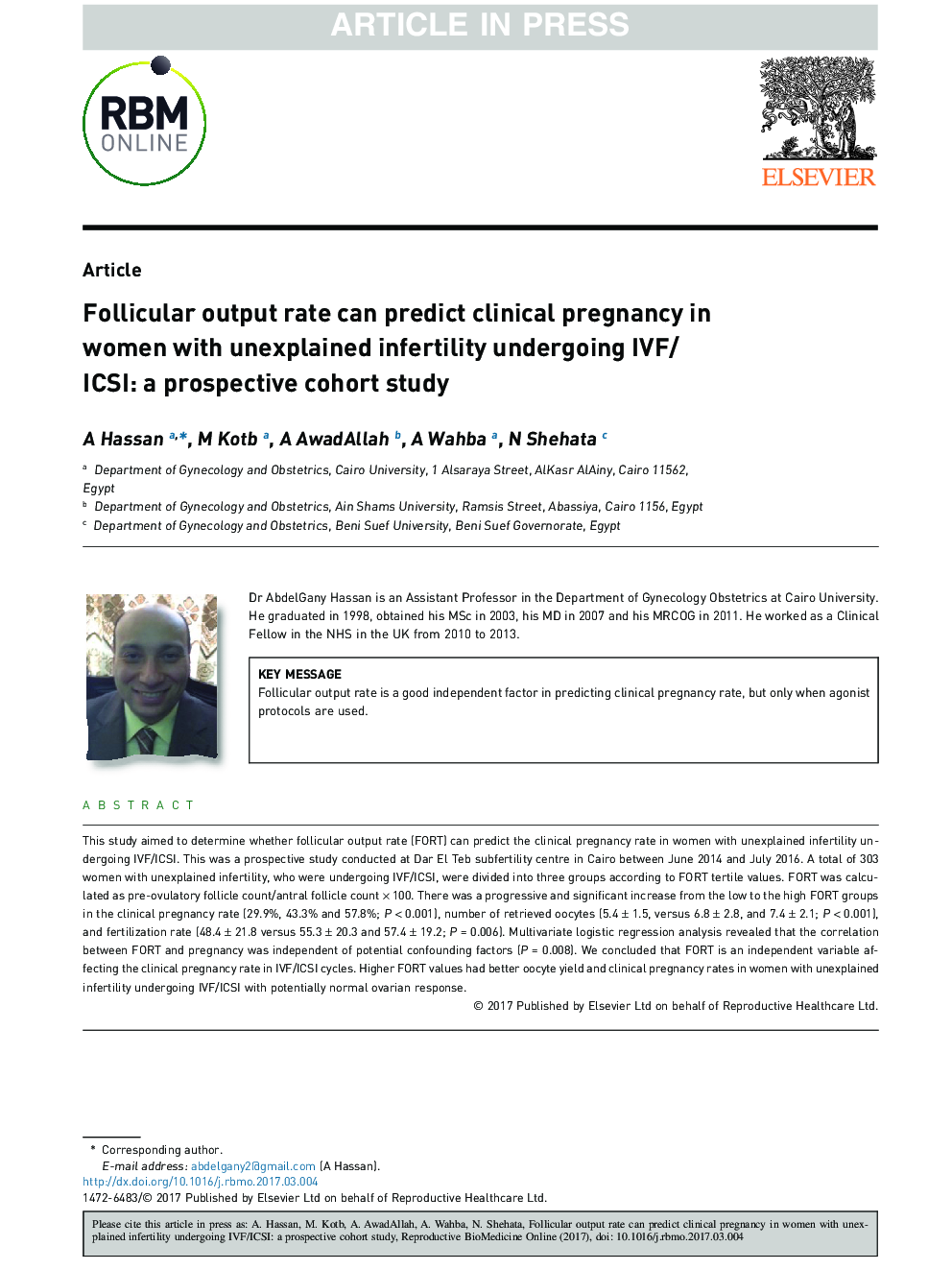| Article ID | Journal | Published Year | Pages | File Type |
|---|---|---|---|---|
| 5696766 | Reproductive BioMedicine Online | 2017 | 7 Pages |
Abstract
This study aimed to determine whether follicular output rate (FORT) can predict the clinical pregnancy rate in women with unexplained infertility undergoing IVF/ICSI. This was a prospective study conducted at Dar El Teb subfertility centre in Cairo between June 2014 and July 2016. A total of 303 women with unexplained infertility, who were undergoing IVF/ICSI, were divided into three groups according to FORT tertile values. FORT was calculated as pre-ovulatory follicle count/antral follicle count à 100. There was a progressive and significant increase from the low to the high FORT groups in the clinical pregnancy rate (29.9%, 43.3% and 57.8%; P < 0.001), number of retrieved oocytes (5.4 ± 1.5, versus 6.8 ± 2.8, and 7.4 ± 2.1; P < 0.001), and fertilization rate (48.4 ± 21.8 versus 55.3 ± 20.3 and 57.4 ± 19.2; P = 0.006). Multivariate logistic regression analysis revealed that the correlation between FORT and pregnancy was independent of potential confounding factors (P = 0.008). We concluded that FORT is an independent variable affecting the clinical pregnancy rate in IVF/ICSI cycles. Higher FORT values had better oocyte yield and clinical pregnancy rates in women with unexplained infertility undergoing IVF/ICSI with potentially normal ovarian response.
Related Topics
Health Sciences
Medicine and Dentistry
Obstetrics, Gynecology and Women's Health
Authors
A. Hassan, M. Kotb, A. AwadAllah, A. Wahba, N. Shehata,
